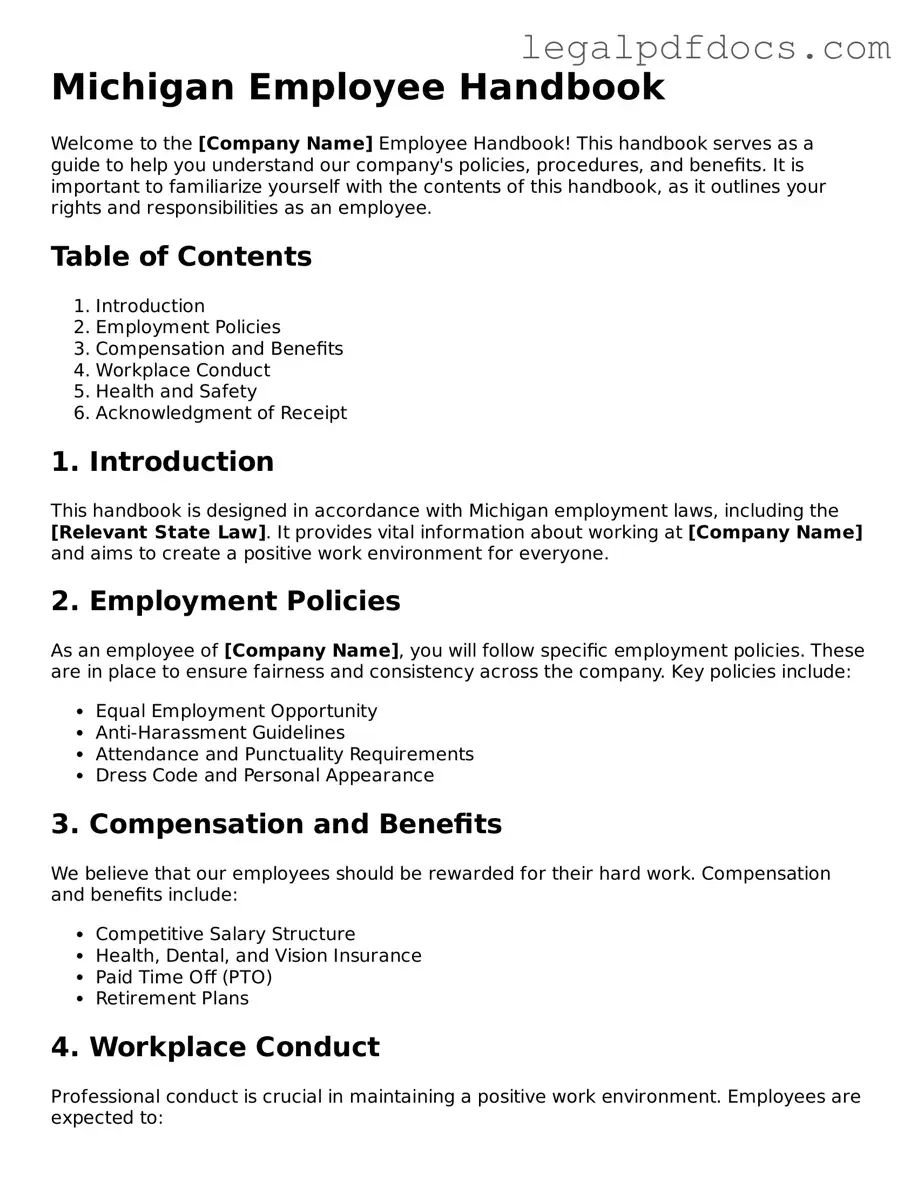Official Employee Handbook Form for Michigan
The Michigan Employee Handbook form serves as a vital document that outlines a company’s policies, procedures, and expectations for employees. It helps ensure that both employers and employees understand their rights and responsibilities within the workplace. To create a comprehensive and effective handbook, consider filling out the form by clicking the button below.
Open Employee Handbook Editor Here
